Roses aren’t the only plants with sharp thorns and beautiful flowers. Cactus plants have some of the most attractive flowers you could want in your garden.
Landscaping with cactus is more than a trendy landscape design. From succulents to agave, cactuses come in all sizes, shapes, and colors. These low-maintenance, drought-tolerant plants can save you time and water, too.
If you’re thinking about adding cactus plants to your landscape, here are 11 ideas for landscaping with cactuses.
11 Ways to Add Cactus to Your Landscaping
1. Add flowering cactus plants to your gardens
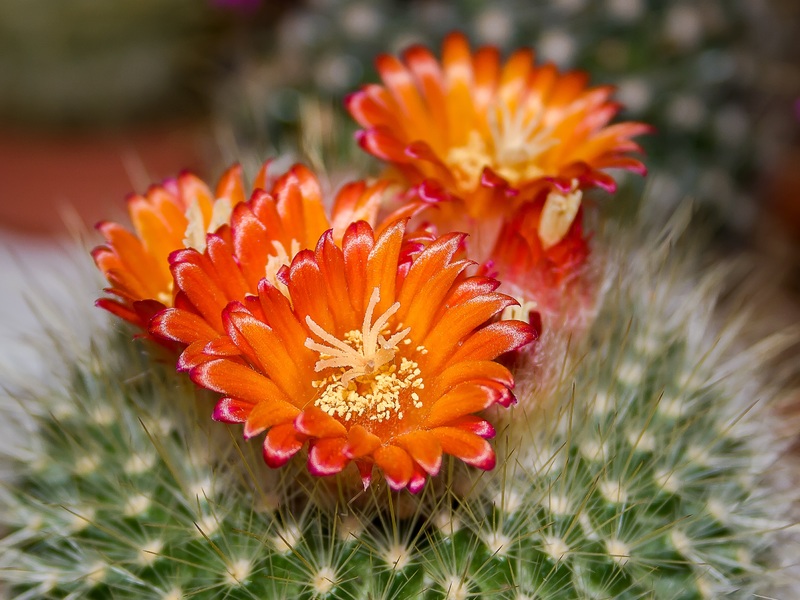
Not all cactus plants bloom, but some of them produce colorful flowers for weeks at a time in the right conditions. The right cactus can be a colorful centerpiece for your flower bed.
Flowering cactus varieties
- Star cactus (Astrophytum): Produces yellow or white flowers
- Christmas cactus (Schlumbergera: Features red, pink, or orange flowers
- Mammillari: Will bloom with several tiny pink flowers
- Orchid cactus (Epiphyllum): Produces larger pink flowers
- Hedgehog cactus (Echinopsis): Has red flowers
- Ball cactus (Parodia, Brasilicactus): Features petite yellow flowers
- Prickly pear (Opuntia): This small shrub produces 3-inch red flowers as well as fruit
2. Mix your cactuses
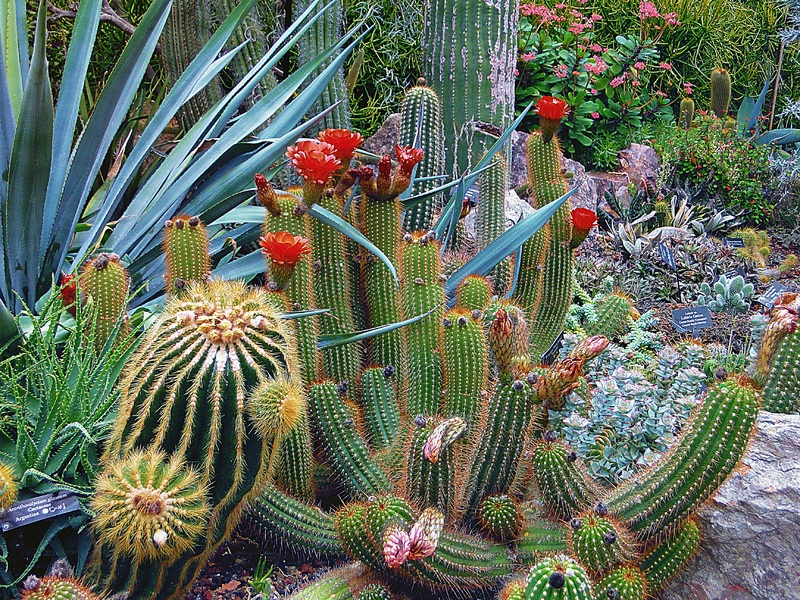
Cactuses come in 2,000 species, so why not mix it up by using a wide variety? You can use different sizes, heights, textures, and colors to create a masterpiece of garden design.
3. Use succulents to fill empty spaces
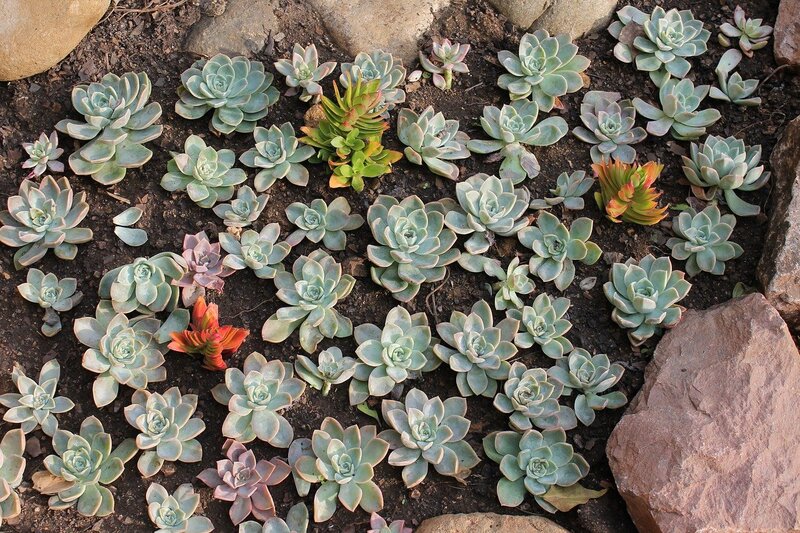
Succulents are a great, low-maintenance option for filling empty spaces or grouped together as a succulent garden for small areas of interest.
Succulents aren’t actually cactus plants, but they work well alongside cactuses because they thrive in the same low-water environments. When planted together, succulents and cactuses create a bed of attractive companion plants that need little care.
4. Go big with agave
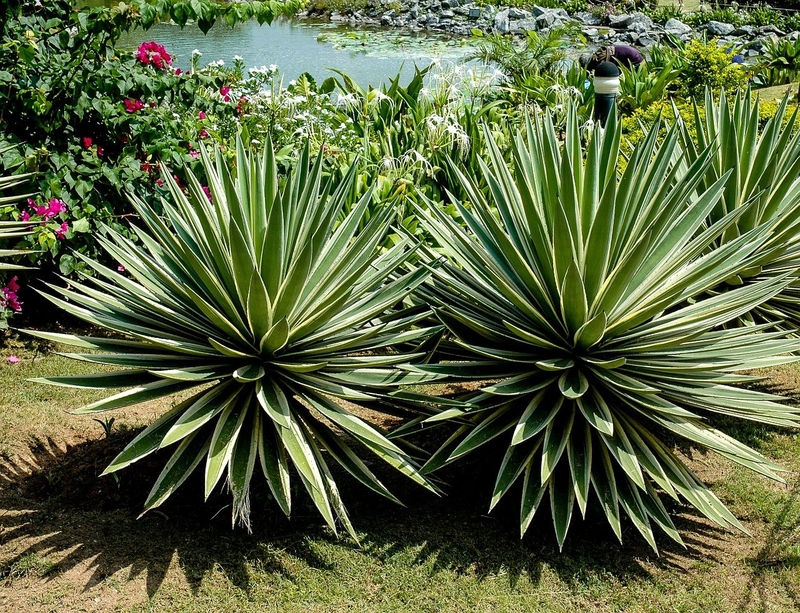
Agave plants produce a big, wide bundle of long, spiny “leaves” that take up a lot of space. They make a great centerpiece for beds of native plants or an interesting attraction near a mailbox or doorway.
5. Round things out with barrel cactuses
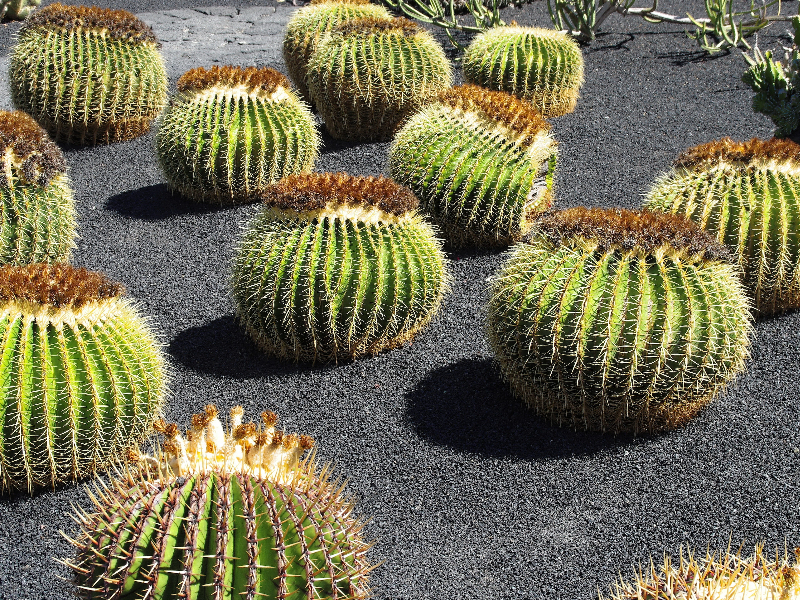
Barrel cactus is another large showstopper on its own, but it also works well when you plant smaller ones in bunches. You can line up these cactuses along a walkway or use their golden barrels along curves to create visual interest.
6. Add a little (or a lot of) aloe
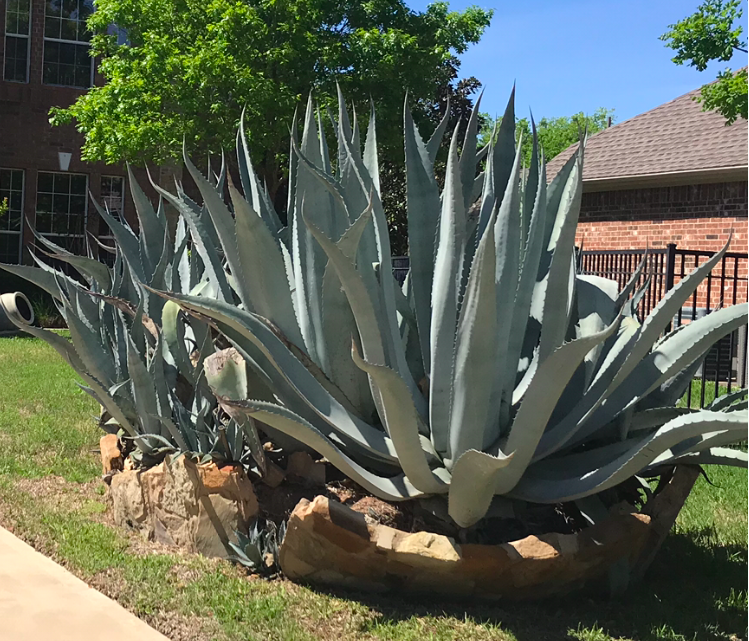 Photo credit: Brenda Ryan / LawnStarter
Photo credit: Brenda Ryan / LawnStarterAloe is a fleshy green succulent that produces broad, spiny leaves. Touted for its medicinal qualities, aloe is commonly used in pots but can grow much larger when planted in a flower bed or rock garden.
Aloe plants are extremely resilient and need very little much maintenance. Dog owners beware: Aloe is toxic to animals.
7. Add some color to your rock garden
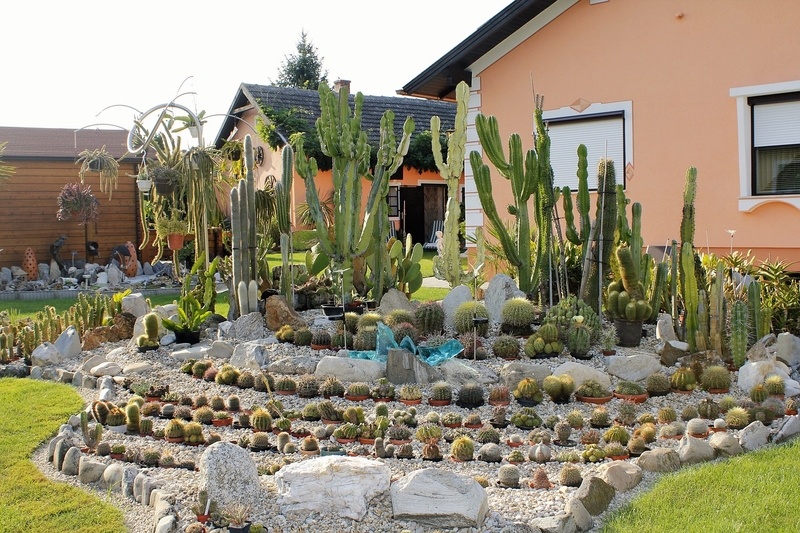
Rock gardens are a popular, low-maintenance alternative to messy and cumbersome flower beds. Cactuses are great additions because they can handle the lower moisture levels that come with using gravel instead of soil.
So, load up your rock garden with lots of small cactuses, or plant one large one as a centerpiece among landscaping rocks.
8. Swap bushes for prickly pear cactus

The prickly pear cactus grows in large, wide bunches that can work well in place of bushes. They accomplish the same goal and have the added benefit of producing a colorful fruit.
In arid climates like Arizona, this type of desert landscaping is commonplace. In front yards outside of the desert, a large prickly pear cactus will make for an interesting change of pace.
Note: Just don’t pick the aptly named prickly pear fruit with your bare hands. You have been warned.
9. Level up your cactus garden with yucca

The yucca has long leaves that bunch at the top of a long, skinny trunk. Its height brings a different visual than your typical cactus plant and brings a nice variety to your landscape design.
Yucca’s long trunk also leaves plenty of room for colorful accent plants at its base.
10. Go vertical with columnar cactuses
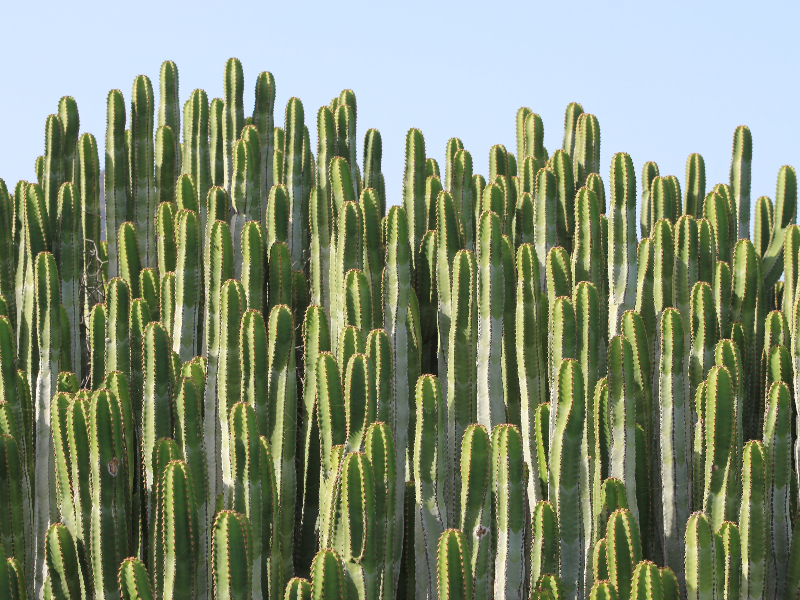
Columnar cactus varieties, such as cereus and euphorbia, grow very tall. These cactuses bring a splash of color to an otherwise bare exterior wall or make for a great backdrop to a cactus garden.
Columnar cactuses look great when evenly lined up in fence-like rows or clustered together in spots throughout a xeriscape garden.
11. Try potted cactuses for creative additions
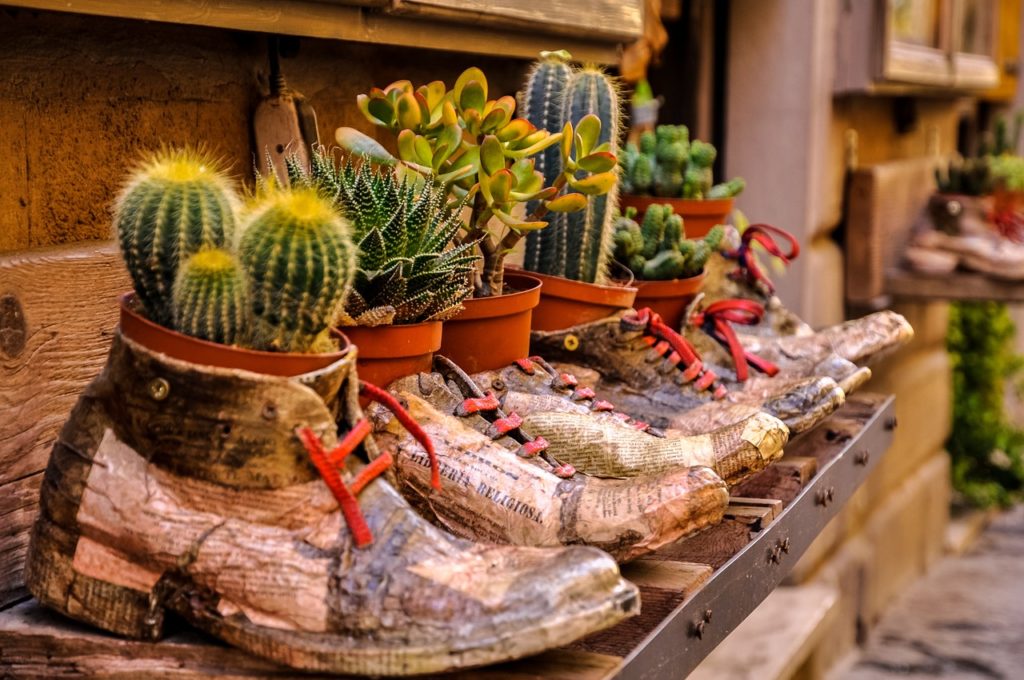
Cactus thrives when planted in pots. Using pots allows you to control the size of your cactuses, make sure they’re getting the nutrients they need, and easily maintain them when needed.
Potting your cactus also allows you to get creative with how you arrange them in your landscape. Use interesting pots or put them in fun DIY planters like an old recycled wheelbarrow or wooden crate.
FAQs about Landscaping with Cactus
Will a cactus survive the winter outdoors?
Certain varieties of cactus, such as the Eastern prickly pear, hedgehog cactus, and escobaria, thrive in the cold. Some can handle temperatures as low as -35 degrees.
The majority of cactuses, though, prefer temperatures between 45 and 85 degrees. It’s not the snow that damages the plant, but rather harsh winds.
Can you mulch around a cactus?
Because cactuses have shallow root systems, mulch can trap in moisture and heat, causing damage to your plants. It’s better to use gravel as a mulch substitute in a cactus landscape.
Do you need special soil for cactus?
Yes, cactuses should be planted in soil that is specially designed for them. You can find cactus soil at your local garden center or online.
Where should I put my cactus?
Full sun is best for many cactus plants, but some varieties prefer shade. Do your research or consult a landscape designer when planning your cactus or succulent garden.
Can a cactus get too much sun?
Most cactus plants love sunlight, but too much heat can cause sunburn. This type of sun damage on your cactus is permanent, but it is usually minor and can be trimmed away.
When to Call a Landscaping Professional
If handling a spiky cactus doesn’t sound like your idea of a relaxing weekend in the garden, call a landscaping professional near you for help designing and installing the perfect cactus garden.
A pro will know exactly what soil to use, where to place your cactuses, and what varieties will work best in your yard.
The help of a landscaping professional could mean the difference between a hand full of spines and a beautiful cactus garden.


